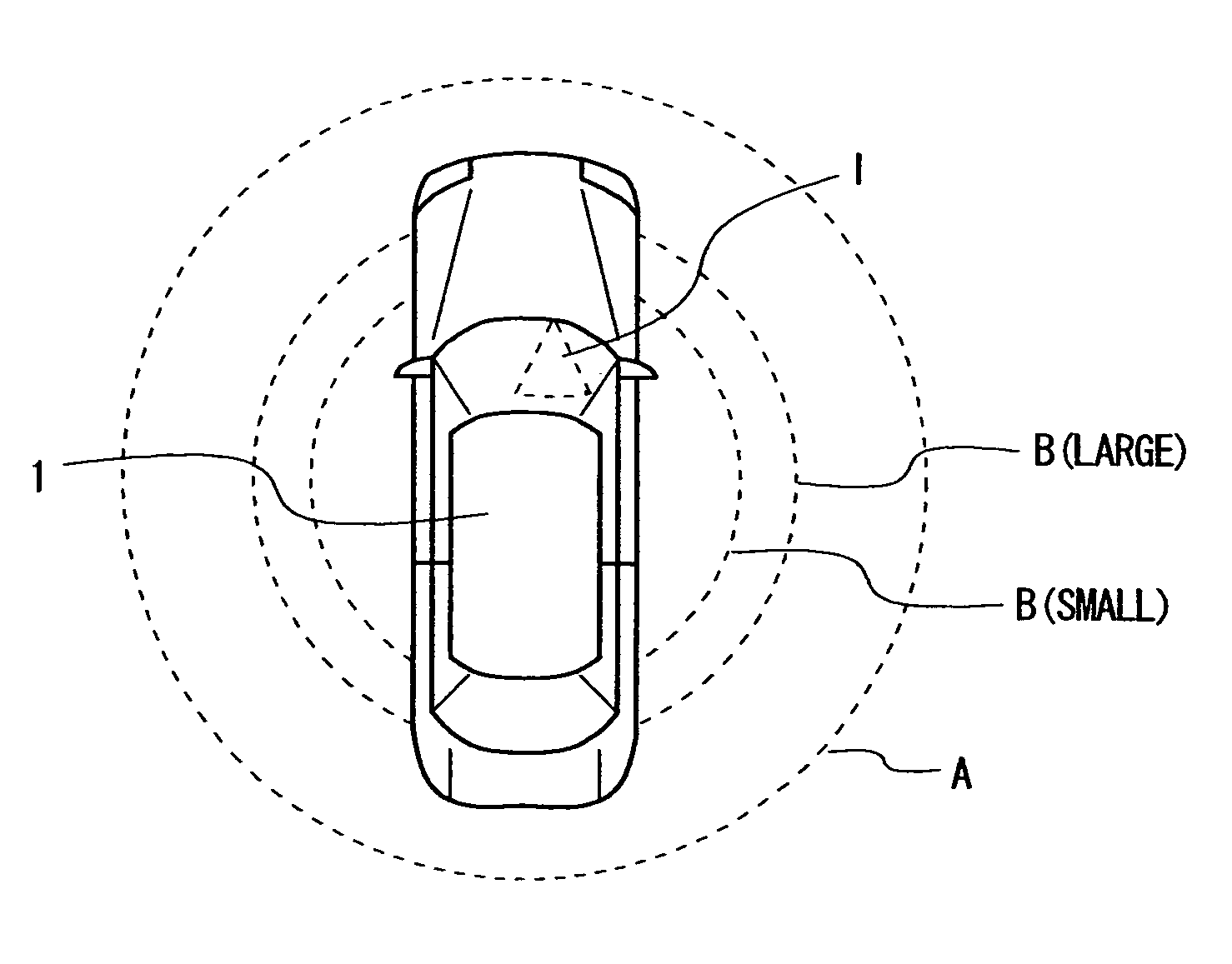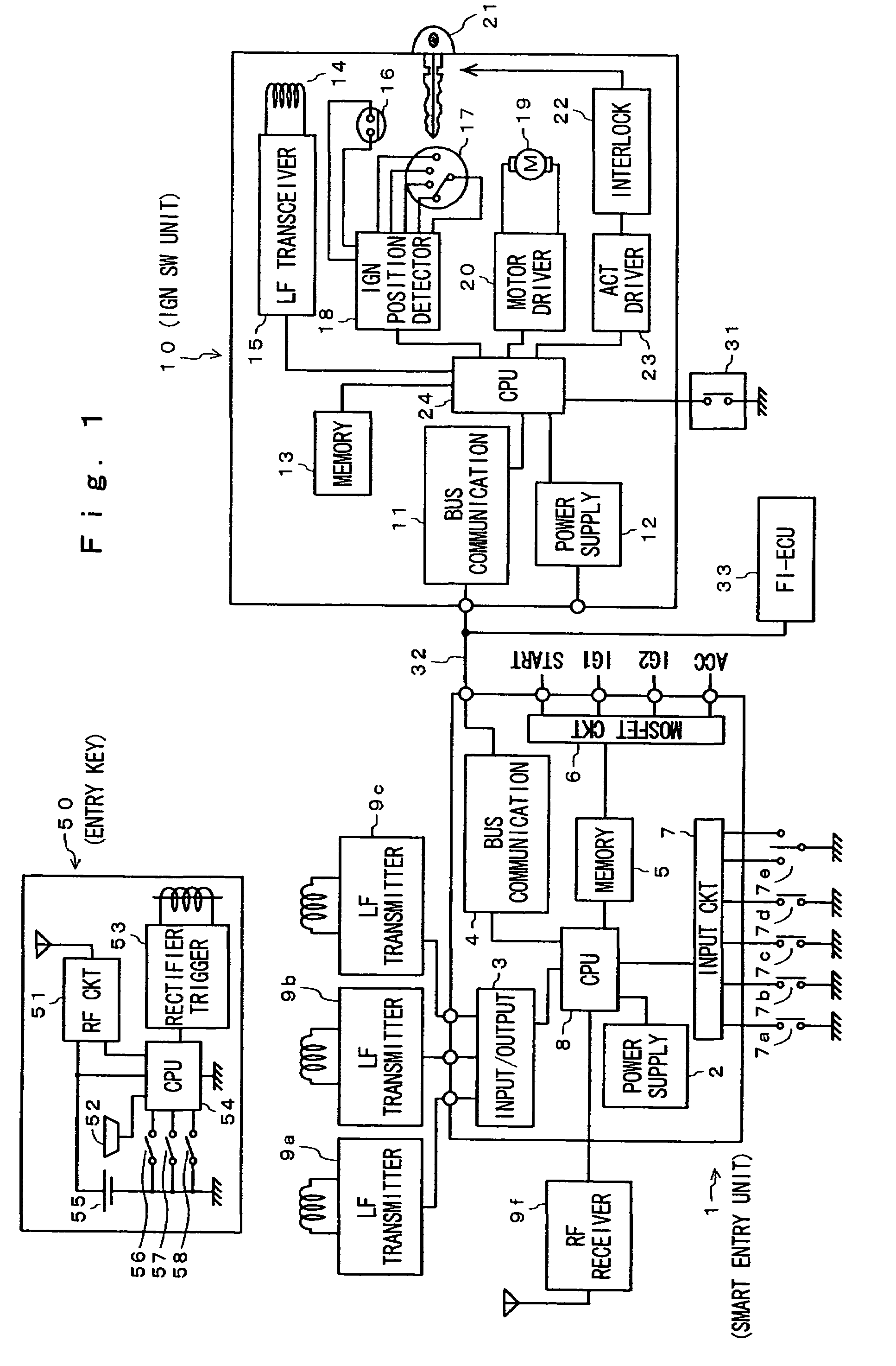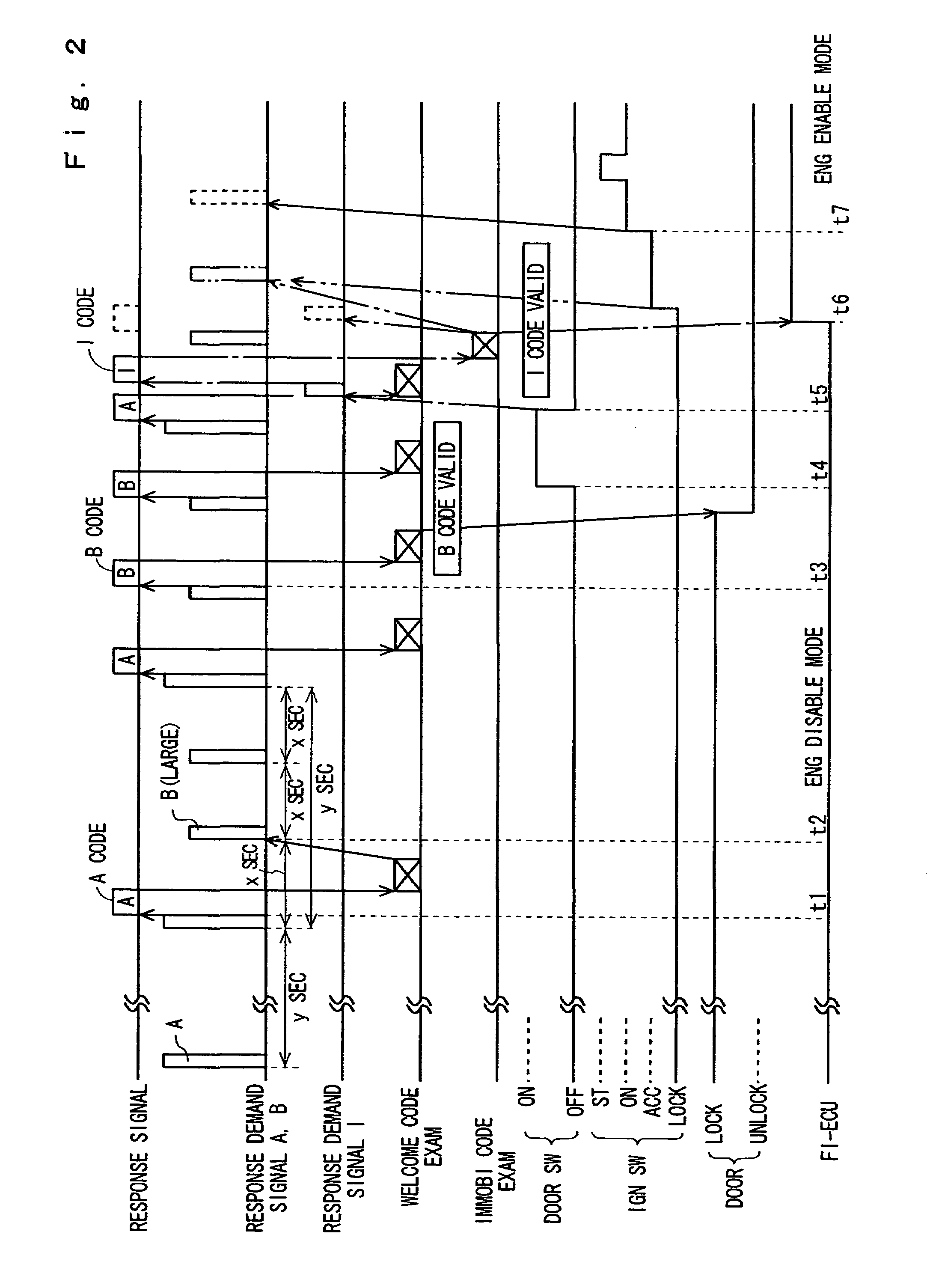Remote control system for a vehicle
a remote control and vehicle technology, applied in the field of remote control systems for vehicles, can solve the problems of user verification of doors, high difficulty, and inability to perform door locking, and achieve the effects of reducing power consumption, reducing the transmission of response demand signals, and improving the anti-thief function
- Summary
- Abstract
- Description
- Claims
- Application Information
AI Technical Summary
Benefits of technology
Problems solved by technology
Method used
Image
Examples
Embodiment Construction
[0056]An entry key system for a vehicle according to first embodiment of the present invention will be describe in more detail referring to the accompanying drawings. Before starting the main description, some definitions on the flags at 1 of the bit and the timers employed in the description and the drawings are explained as listed below.[0057]AREC=reception of A code;[0058]ATM=transmission of A response demand signal;[0059]BCHG=start of examining the shift from small B response demand signal to large B response demand signal;[0060]BLTM=transmission of large B response demand signal;[0061]BREC=reception of B code;[0062]BSTM=transmission of small B response demand signal;[0063]I(variable)=the number of consecutive receptions of A code;[0064]IMCHK=start of immobilizing checkup;[0065]IMDONE=finish of immobilizing checkup;[0066]IMOK=result of immobilizing checkup;[0067]m(variable)=setting in timer T-OUT;[0068]MOD(n,m)=remainder of n / m;[0069]n(variable)=setting for the kind of response ...
PUM
 Login to View More
Login to View More Abstract
Description
Claims
Application Information
 Login to View More
Login to View More - R&D
- Intellectual Property
- Life Sciences
- Materials
- Tech Scout
- Unparalleled Data Quality
- Higher Quality Content
- 60% Fewer Hallucinations
Browse by: Latest US Patents, China's latest patents, Technical Efficacy Thesaurus, Application Domain, Technology Topic, Popular Technical Reports.
© 2025 PatSnap. All rights reserved.Legal|Privacy policy|Modern Slavery Act Transparency Statement|Sitemap|About US| Contact US: help@patsnap.com



